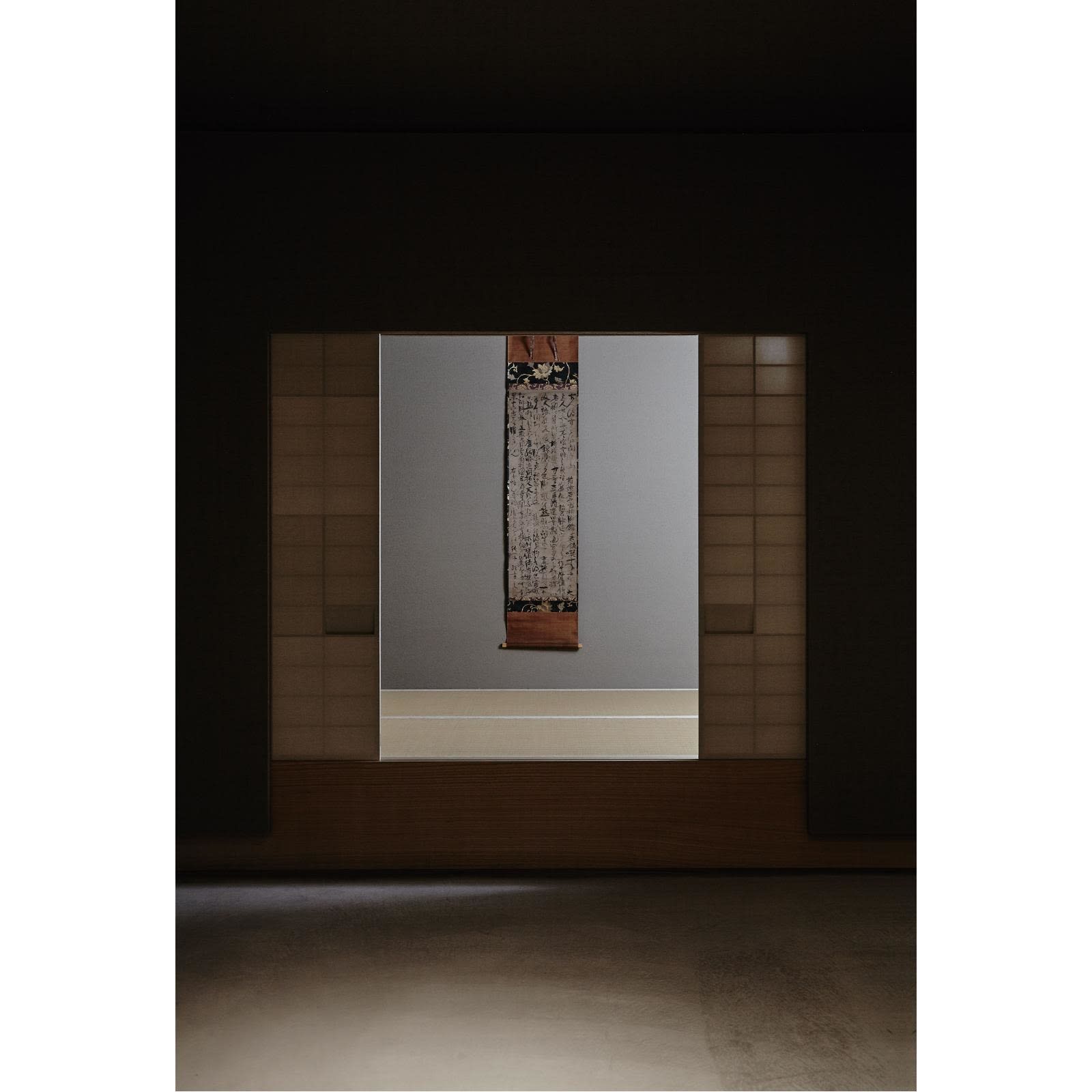Ikkyū Sōjun (1394–1481)
Essential Teachings of Yuanwu Keqin
Ink on paper, hanging scroll
With authentication by Shinjuan Sogen
Double boxed
Seals: Ikkyu; Kokkei
108.7 x 35.5 cm
187 x 37.3 cm (overall)
With authentication by Shinjuan Sogen
Double boxed
Seals: Ikkyu; Kokkei
108.7 x 35.5 cm
187 x 37.3 cm (overall)
Further images
Written here is a discourse on practice and enlightenment delivered by the Chinese Song dynasty Chan monk Yuanwu Keqin (1063–1135), which is included in a collection of his saying, Essentials of Yuanwu. It basically says: “Those who attained enlightenment in the past spent twenty to thirty years deep in the mountains. Though this is not expected these days, monks should not be overweight and should hide away from the world, so as to observe the precepts and eliminate bad karma from the past. If one has reserved strength, he should teach people about Buddhism to escape the cycle of rebirth and rejoice in the Buddha’s compassion together. Even if one is recommended to be the head priest, he should not pay heed to the position. Still more, one should not seek fame and fortune by ingratiating oneself to those in power and compromising one’s views. One may not have the chance to become a head priest, but if one makes himself in the world in this way, he is a true arhat!”
The Japanese Zen monk Ikkyu’s calligraphy possesses both the clarity and intensity found in works by Zen monks as well as a sense of unrestrained freedom. Ikkyu’s brush demonstrates stylistic variation, becoming wild and changing in places from semi-cursive to informal cursive script. For example, the character tsu (“go through”), which flips up high at the bottom of the third line, and the character rai (“to come”), which swings out to the right and left in the middle of the fifth line, are distinctive of Ikkyu and appear in similar form in other calligraphic works by this eccentric priest. The form of the character fu (“not”) at the top of the second line and bottom of the fifth is also unique to Ikkyu, who used it in his famous departing verse as well as elsewhere.
Ikkyu Sojun (Zen priest, poet, calligrapher, painter; 1394−1481)
Also known as Kyo’unshi; Kokkei; etc.
Early Muromachi-period Rinzai School Zen priest. The 47th abbot of Daitoku-ji temple. Emperor Gokomatsu’s son. Converted to Buddhism and became a priest under the teaching of Kaso Sodon at Daitoku-ji temple at an early age. Led a riotous and eccentric life. Excelled at calligraphy, painting and geju (Zen Buddhist verse) writing. Composed a Chinese-style poem collection Kyoun-shu (Crazy Clouds Anthology).
The Japanese Zen monk Ikkyu’s calligraphy possesses both the clarity and intensity found in works by Zen monks as well as a sense of unrestrained freedom. Ikkyu’s brush demonstrates stylistic variation, becoming wild and changing in places from semi-cursive to informal cursive script. For example, the character tsu (“go through”), which flips up high at the bottom of the third line, and the character rai (“to come”), which swings out to the right and left in the middle of the fifth line, are distinctive of Ikkyu and appear in similar form in other calligraphic works by this eccentric priest. The form of the character fu (“not”) at the top of the second line and bottom of the fifth is also unique to Ikkyu, who used it in his famous departing verse as well as elsewhere.
Ikkyu Sojun (Zen priest, poet, calligrapher, painter; 1394−1481)
Also known as Kyo’unshi; Kokkei; etc.
Early Muromachi-period Rinzai School Zen priest. The 47th abbot of Daitoku-ji temple. Emperor Gokomatsu’s son. Converted to Buddhism and became a priest under the teaching of Kaso Sodon at Daitoku-ji temple at an early age. Led a riotous and eccentric life. Excelled at calligraphy, painting and geju (Zen Buddhist verse) writing. Composed a Chinese-style poem collection Kyoun-shu (Crazy Clouds Anthology).







